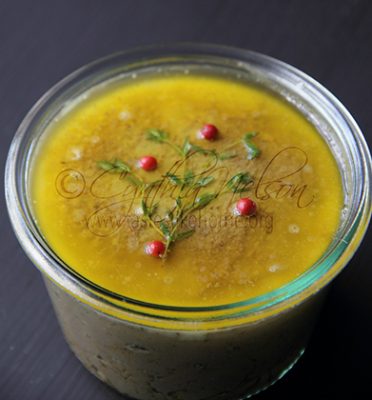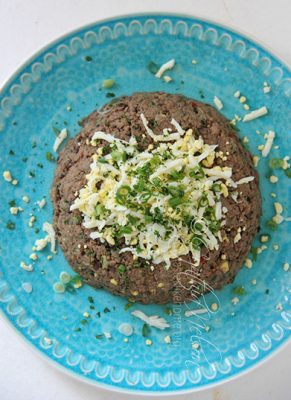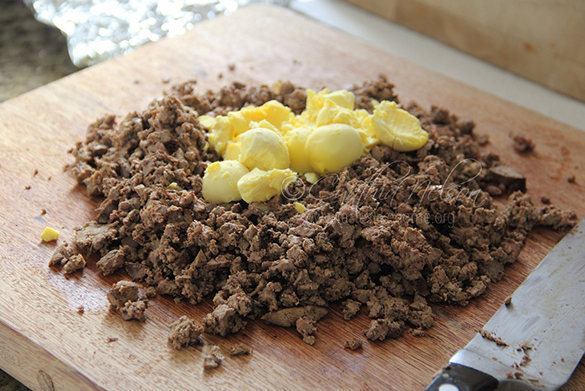I recently watched an episode of “The Hairy Bikers” (British TV Chefs), ‘Chicken and Egg’ series in which they visited Israel. At the home of a chef and kosher food writer of Polish decent, they ate Chopped Liver. They described it as savoury and tasty, then one of the Bikers remarked, “This is food for people who work hard; you couldn’t eat this and sit a desk”.
I borrowed a part of the title of today’s headline from David Chang’s Netflix documentary series, “Ugly Delicious”. The series looks at what food means and the choices people make that change its meaning. I had watched “Ugly Delicious” long before the ‘Chicken and Egg’ series, but I immediately cast my mind back to “Ugly Delicious” when I heard the comment about Chopped Liver being the food of people who worked hard. Why?
Part 1 – Chopped Liver
Chopped Liver is a liver pâté that has roots in Europe, and it is believed to have been adopted by Jewish Communities, particularly those from Eastern Europe. It is a peasant dish that comes from the school of nose to tail eating. In other words, eating the whole animal and not letting anything go to waste because there is so little. The dish is made by cooking the livers either by grilling or a quick pan-fry, then chopping and mixing them with onions cooked with a generous helping of schmaltz (rendered chicken fat), or vegetable oil along with chopped boiled eggs. Parsley and sliced scallions complete this tasty side dish. Today, Chopped Liver can be found at many Jewish delis and is often served as an appetizer for Jewish holidays and gatherings. Many food writers are quick to point out that it is far from healthy and it is sometimes called “a heart attack on a plate” because of the fat and cholesterol content of the liver and fat in which it is cooked as well as the boiled eggs. They hasten to add that the dish is, however, comforting and nostalgic.

Part 2 – Liver Pâté
In many parts of Europe – France, Finland, Germany, the Netherlands, to name a few – Liver Pâté is a spread. Sautéed livers are cooked in lots of butter with herbs such as thyme and bay leaves, along with onions, garlic and a couple splashes of alcohol, preferably Cognac, brandy or port. Some recipes add milk and boiled eggs too. All the cooked ingredients and liquid are pureed until smooth and sometimes passed through a chinois (a cone-shaped sieve with a closely woven mesh). Passing the pureed mixture through a chinois makes it smoother and creamier giving the pâté a refined texture. If is not being served immediately, the Liver Pâté is topped with melted butter that hardens when refrigerated. The topping adds another layer of flavour (and yes, fat).
Liver Pâté is usually served as a snack or appetizer (at home when entertaining and at high-end restaurants) or a sandwich spread.
Chopped Liver and Liver Pâté are essentially the same thing, the main difference being that one is chopped finely, thereby having a coarser texture, and the other pureed and pressed smooth. Yet, they are thought of differently, spoken, written about and even photographed differently – one being low brow (Chopped Liver) and the other being highbrow (Liver Pâté). It is this comparison that made me think of Chang’s “Ugly Delicious” when I saw the Bikers’ ‘Chicken and Egg – Israel’.
As a quick refresher, “Ugly Delicious” is about what food means and the choices we make that change its meaning.
In ‘Chicken and Egg’, Chopped Liver is spoken of as food for people who work hard (take what you want from that comment – poor people, lower working-class people, people of little means). One of the hosts continues, “You couldn’t eat this and sit at a desk”. Why? It is no more fat-content-cholesterol-inducing than Liver Pâté. They are made with the same ingredients, and actually Liver Pâté specifically calls for more butter, not only to cook the livers but the aromatics and to top it off too! How much farther from being “healthy” or a “heart attack on a plate” is Chopped Liver from Liver Pâté? How does one’s preference for Liver Pâté over Chopped Liver change the meaning of this dish?
Is it the look? Is it the name? Chopped Liver sounds crude; now Liver Pâté, you can

feel yourself almost raising your shoulders as you say the word pâté because it sounds sophisticated. Is it how it is served/presentation? Is it how it is described when we write and talk about it? Describing Liver Pâté as a silky, smooth, decadent treat is appetizing and inviting isn’t it? Talking about the livers and onions being cooked in delicious butter with fragrant herbs is very appealing. Suggest using vegetable oil instead, eh (sounds bland); schmaltz? (sounds cholesterol-inducing); however, either of these can be used for Chopped Liver. We prefer butter for the pâté. See how our choice changes the “value” we place on the dish?
Who is making the food is another factor in giving it value (including dollar value) and meaning – home cooks make Chopped Liver; Chefs (in whites) make Liver Pâté.
Confession
When I thought of today’s column headline: Ugly Delicious, I was thinking more of how the two words are so perfectly suited for the recipe of Chopped Liver that I wanted to share with you today. Ugly because liver, whether chicken, calf, pork or lamb is an organ meat that not many people eat, and, that the dish itself is not the most attractive when made. Of course, putting it in an attractive dish, styling the presentation and choosing a good angle and lighting for photography can change all of that, transforming ugly. I liked the word Delicious because it says that though this dish may not sound or look the most enticing, it is delicious. Ugly Delicious, two seemingly opposing concepts, great together.
However, as I started to write, I scrapped the idea and decided instead to discuss how our choices of talking, writing, cooking and sharing about a dish can change its meaning and our perspective on things. Professor of Medieval Literature at the University of Bonn, Irina Dumitrescu, in her essay, ‘The Curious Appeal of “Bad” Food’, puts it eloquently, “Culinary preferences signal one’s class, ethical stance, or outlook on the world. The foods we eat, and especially the ones we talk about eating, tell others how we understand our bodies: sensitive or resilient, hardworking or overflowing, rebellious or disciplined. In short, food offers ways of telling stories about who we are and where we come from. And bad food does this better than good.”
Cynthia







